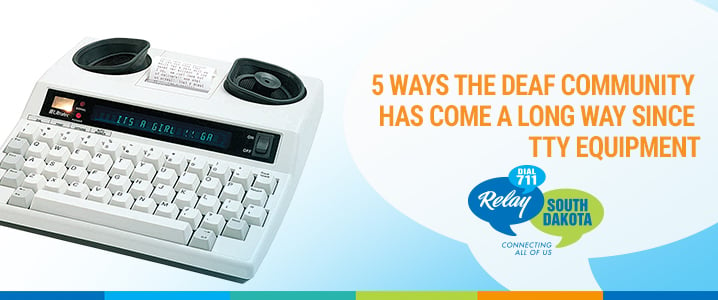
5 Ways the Deaf Community Has Come a Long Way Since TTY Equipment

Tech advancements have made an impact on the everyday lives of many people—and the deaf and hard-of-hearing community is no exception. Advancements in telephones, hearing aids, FM systems, cochlear implants and other TTY technologies have undoubtedly made their marks on the population.
But what does this impact look like, and how has it affected relationships with the hearing community?
The Internet
One of the most impactful technological advancements in recent times has been the internet. The development of the web allowed the deaf and hard-of-hearing community to converse more effectively through TTY equipment. Individuals can now receive on-screen captions directly to their TTY phones.
And if they choose to forego a captioned phone, popular applications such as Skype or FaceTime allow for signing with face-to-face communication. As speech-to-text solutions continue to develop and become more advanced, it will surely play a larger role in communication for this community.
Social Media
The arrival of the internet has also paved the way for the development of social media—it’s allowed the deaf and hard-of-hearing community to connect to the hearing community like never before. Facebook, Instagram, Twitter, Snapchat and other online communities have given the deaf community a new sense of inclusion with hearing people through diverse conversation styles that include text, video and image-based communication.
Medical Devices
Some strides made in technology geared toward deaf and hard-of-hearing individuals have been based in medical advancement. One such recent one is the cochlear implant—a surgically implanted device that allows a person who is hard of hearing or profoundly deaf to gain a sense of sound. With more than 200,000 people using the devices since their first official approval by the Food and Drug Administration in 1984, it’s been a widespread advancement for the community.
Accessibility
Many of the beneficial impacts of these technologies also rely on mobile networks and quality access to them. While much of this technology isn’t as widespread to the deaf or hard of hearing in certain rural regions of Asia and Africa, access is growing rapidly. Without reliable internet and mobile networking infrastructure the less the benefits can be felt—these demographics are trending toward widespread access over time.
Cohesion
Bringing everyday technologies into the deaf and hard-of-hearing toolbelt from an early age continues to solidify the cohesion between using screen-based and text-based tools as second nature. It has brought down barriers between the hearing and hard-of-hearing communities in public settings, including schools, workplaces and beyond.


